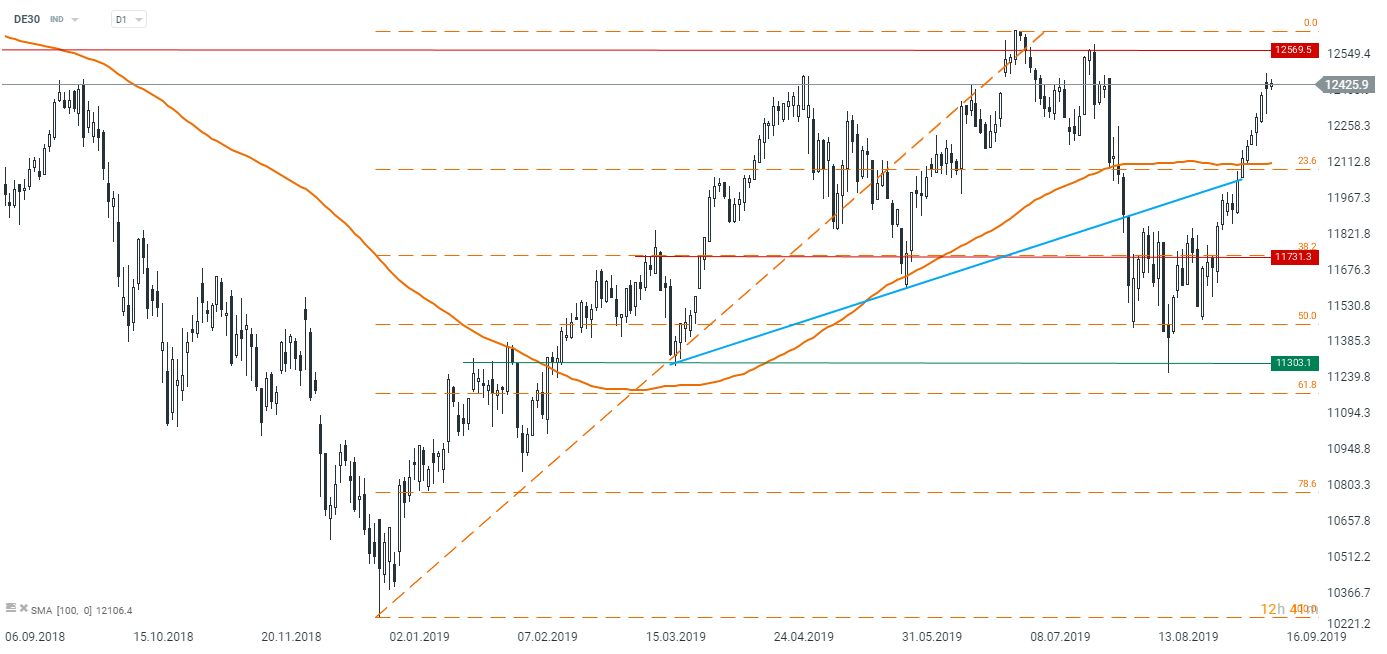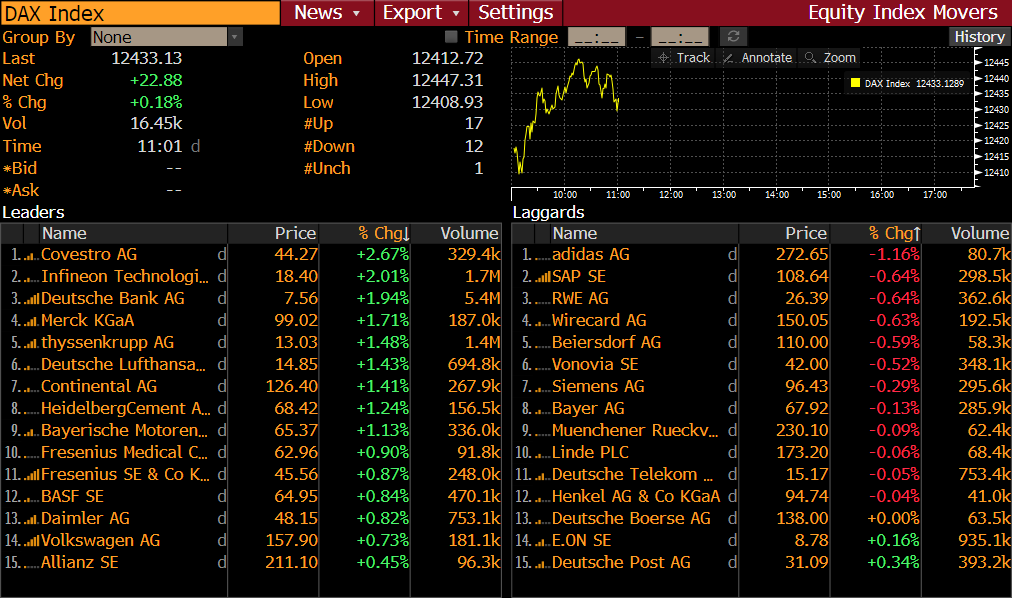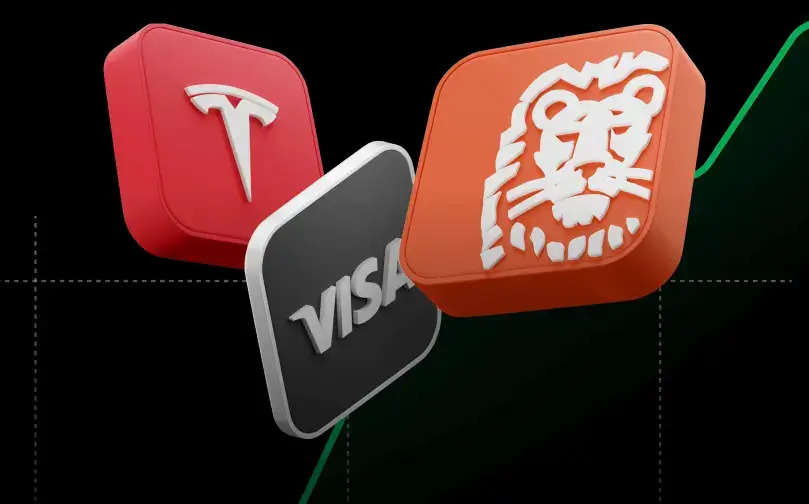Summary:
- European equities have kicked off the day with modest rises
- ECB delivers a substantial easing package but it could be spoilt by a contentious two-tier system
- DE30 keeps climbing toward 12 600 points
European investors share rather cautious optimism this morning following the European Central Bank meeting on Thursday. Moreover, it is possible that some of this performance stems from revelations from the trade front. Let us recall that according to information obtained by Bloomberg, the US is considering offering an interim trade agreement to China. This would be an important step before face-to-face negotiations next month as a possible short-term deal (being probably easier to reach) would result in delaying of imposing new duties or even rolling back some of the tariffs already in place. There is no need to remind that until no trade deal (even interim one) is signed by both sides, everything is possible, hence a turnaround coming like a bolt from the blue is undoubtedly still on the cards. Either way, let us focus today on what the ECB delivered yesterday with consequences for financial markets as well as the real economy. Nevertheless, before we do so, let’s take a closer look at the DE30.

Start investing today or test a free demo
Create account Try a demo Download mobile app Download mobile appLooking at the daily chart one may notice that yesterday’s candlestick brought elevated volatility as evidenced by long wicks of the candlestick. Ultimately, bulls seem to have been salvaged as the German index is heading north this morning. Thus, one still cannot rule out a steady upward move toward 12 600 points, where buyers may face some obstacles. Therefore, this is our short-term baseline, however, we are not convinced what could happen thereafter as it could be heavily dependent on what we will be offered from the trade front. Source: xStation5
Now, let us analyze in greater detail what the ECB actually did yesterday and what consequences should be anticipated as a result. First and foremost, the deposit rate was cut to -0.5% from -0.4% as broadly expected. Secondly, the ECB decided to lower the pricing of its lately announced TLTRO III by removing a 10bps premium being added to the average MROs. Thirdly, the central bank also chose to relaunch its asset purchases programme with monthly bond purchases of 20 billion EUR starting on November 1. It expects the new APP “to run for as long as necessary to reinforce the accommodative impact of its policy rates, and to end shortly before it starts raising the key ECB interest rates.” Even though, the central bank underlined the APP is actually open-ended, in practice at this pace of monthly purchases it will be able to run this programme by 6-12 months, according to estimates delivered by other private institutions. Thus, we expect that sooner or later the ECB will be forced to change issue/issuer caps in order to unlock itself more assets available to purchase. Fourthly, reinvestments of principal payments from maturing bonds are to be invested in full “for an extended period of time past the date when the Governing Council starts raising the key ECB interest rates, and in any case for as long as necessary to maintain favourable liquidity conditions and an ample degree of monetary accommodation.”
In terms of forward guidance, the ECB strengthened its pledge on interest rates signalling that they remain “remain at their present or lower levels until we have seen the inflation outlook robustly converge to a level sufficiently close to, but below, 2% within our projection horizon, and such convergence has been consistently reflected in underlying inflation dynamics.” Having in mind that the ECB has lately modified its approach to the inflation objective (suggesting that it may accept CPI even somewhat above 2% without taking action), in practice it means rates will not be hiked at least until the end of 2021 where the central bank sees CPI at 1.5% (below its aim). Looking broader, we would even see rates at current or lower levels not only during the upcoming two years but much, much longer as it has been the case in Japan where the last rate hike took place in 2007.
Last but not least, a two-tier system, announced to help ease downward pressure on banks’ profitability, surprised in our view. The ECB said that banks would be allowed to park up to six times their minimum required reserves at 0%. What does it matter? Excess liquidity in the banking system hovers just below 1.7 trillion EUR, and with the average required reserves equal ca. 132 billion EUR, it means that more than 40% of excess liquidity would be excluded from the -0.5% deposit rate. This is obviously positive for banks, however, in practice it could be considered by market participants like a rate hike. That’s why the euro surged along with short-term rates and the yield-curve flattened.
 Following the ECB decision Deutsche Bank is among the best performing stocks in the DAX. Source: Bloomberg
Following the ECB decision Deutsche Bank is among the best performing stocks in the DAX. Source: Bloomberg
This content has been created by XTB S.A. This service is provided by XTB S.A., with its registered office in Warsaw, at Prosta 67, 00-838 Warsaw, Poland, entered in the register of entrepreneurs of the National Court Register (Krajowy Rejestr Sądowy) conducted by District Court for the Capital City of Warsaw, XII Commercial Division of the National Court Register under KRS number 0000217580, REGON number 015803782 and Tax Identification Number (NIP) 527-24-43-955, with the fully paid up share capital in the amount of PLN 5.869.181,75. XTB S.A. conducts brokerage activities on the basis of the license granted by Polish Securities and Exchange Commission on 8th November 2005 No. DDM-M-4021-57-1/2005 and is supervised by Polish Supervision Authority.

